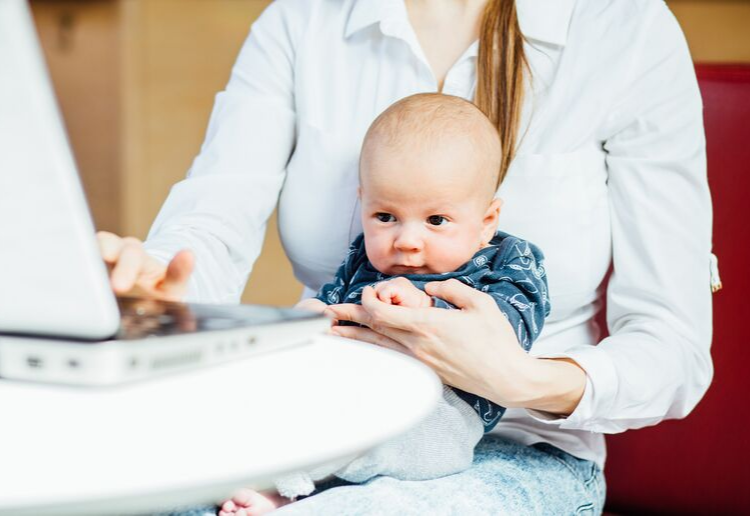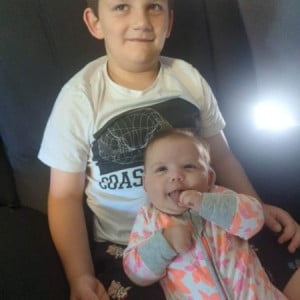When you start taking your kids out to playdates and parties, you know it’s important to teach them how to share, look after themselves and other normal socialising habits that ensure everyone has a fun safe time. But when we start putting them online – either physically or their image – we rarely talk about sharing habits or online etiquette at all.
In an age where our children’s digital footprint often begins from the moment they are born, why do we not think privacy-first and start conversations around their consent to be photographed and where the images can be used. Have we just become too relaxed these days or think we will appear uncool?
Take a privacy-first approach
Although we’ve been sharing our children’s photographs since the invention of the camera, the combination of a readily available lens via our smartphones and the ease of shareability of those images, often through social media platforms, means we’re revealing way more about ourselves than ever before.
But while we are seen as responsible adults who have control and choice over what we’re sharing, our children should not be. Despite being ‘born digital’, our kids are in no better shape when it comes to dealing with loss of privacy. Remember, once lost, privacy is difficult to regain so having a privacy-first mindset in terms of our children’s images will not only reduce some of the risks associated with over-sharing but will give your child a good foundation for a healthy relationship with technology into the future.
What’s so dangerous about sharing photos?
It’s as much about the ‘who’ you’re sharing it with as it is about ‘what’ you’re sharing. From cyberbullying and identity theft to risks of stalking, kidnapping and paedophilia, any exposure to outsiders has the potential to be harmful. And when you consider that your friends, family members and child’s school may also be sharing photos, the exposure level could be very high. So, what can you do about it?
Reduce risk
The more identifying details you reveal, the higher the risk of all the dangers listed above. Learn to practice privacy-first. We recommend:
- Selecting suitable images to avoid full-face snaps. Consider also appropriate clothing and poses.
- Understanding social media channel permissions and privacy settings so you only share it with people you know.
- Editing pictures to blur out identifying details (e.g. a school emblem on a uniform) and remove EXIF data.
- Posting a screenshot instead of the original image to remove the metadata and create a lower resolution image that’s less susceptible to tampering.
Once you know how to reduce risk, you will have more confidence when talking to others about, and assisting them with, a privacy-first practice.
Start a conversation
One of the biggest challenges with photo privacy is starting a conversation about it. Many parents feel they are in the minority when it comes to taking a stance, but in most cases educating others about the risks will help them see why you feel the way you do.
It helps to have some facts in your corner, so don’t be afraid to share content like this article, or stats, like this one from the Australian eSafety Commission which found that half of all images on paedophile image-sharing sites originate from social media sites and blogs. Paedophiles use these images to create fantasy stories and most are completely innocent snaps, nothing inappropriate about them at all.
Once friends and relatives understand your concerns, invite them into your circle of trust, people you know will protect your child’s image. Instead of sharing images publicly, you can share them with this select group. Often this can be arranged using an existing structure of social media permissions, for example a closed group, or by using a specialised image-sharing platform.
You should also practise permission-seeking to normalise it. For example, if your child is playing with their cousin in the park and you want to take a photo, ask the parents – even if it’s your sister. By doing this, you place privacy and consent in the front of other parents’ minds and hopefully the consideration catches on.
Do the paperwork
Very few people care for bureaucracy but it’s important to keep abreast of how organisations like your child’s school or sporting club deal with photographic permissions. Progressive organisations are likely to have a process in place to seek and capture consent, but unfortunately many still don’t.
Every child has the right to safety and digital privacy and it’s up to the parent or guardian to convey how their child’s image is to be used, down to which media channel. If, for example, it’s okay for your child’s photo to appear in the club newsletter but not on its social media channels or website, then the organisation is required to comply with those boundaries.
If there’s paperwork, read the terms carefully before you sign. If the organisation hasn’t brought up photographic consent at all, don’t be afraid to ask about it. Be active about permissions.
In an age where we willingly reveal so much about ourselves, there is no shame in wanting to preserve your child’s privacy. The only shame is that we haven’t talked enough about it to each other.
About Colin Anson, CEO and co-founder of pixevety:
Colin Anson is a digital entrepreneur, and the CEO and co-founder of child image protection and photo storage solution, pixevety.
In 2012, Colin saw an opportunity to create a unique business within his area of passion, photography. He witnessed first-hand the potential risks and harm the mismanagement of photos can have on children. And he became an advocate for protecting every parent’s right to determine how their child’s photo is used, and protecting every child’s right to safety and digital privacy. After learning of the minefield of privacy laws and the daily stress for schools in managing and sharing the photos of every single student, Colin decided to do something about it. And pixevety, a privacy-centric photo management platform was born.





















-

-
-
-
mom268263 said
- 31 Oct 2020
Reply
-

-
-
-
mom462038 said
- 06 Apr 2020
Reply
-

-
-
-
mom81879 said
- 11 Feb 2020
Reply
-

-
-
-
mom325275 said
- 01 Feb 2020
Reply
-

-
-
-
ThisIsMe said
- 16 Jan 2020
Reply
Post a comment3:19 pm
11:26 am
4:38 pm
10:39 am
1:56 pm